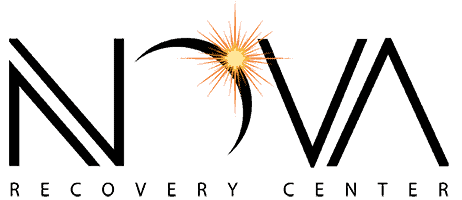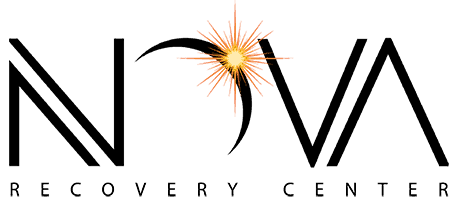Updated on June 25th, 2020
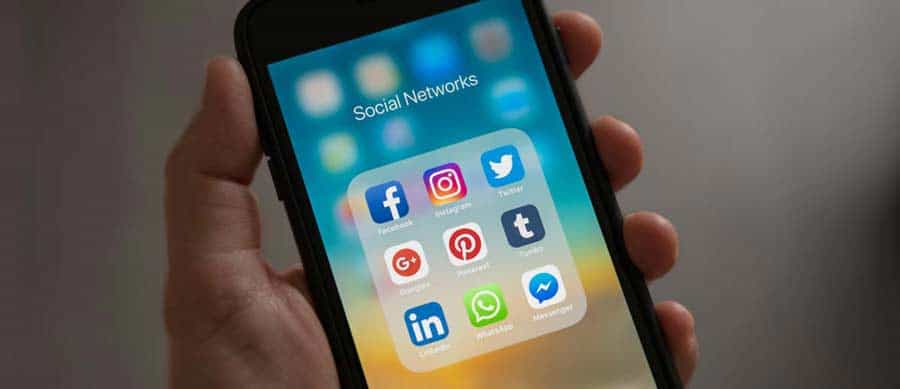
Social media today plays a huge role in the ongoing drug abuse crisis in America. Although social apps and websites are marketed as a safe, fun, online place to interact with friends and family (and they definitely can be), some people also abuse them to share drug-related propaganda or to sell illegal substances.
Social Media in Today’s World
Social media platforms have an increasingly large responsibility to maintain online safety due to an ever-growing population of users. According to TechCrunch, some of the world’s most popular social media platforms boast the following total monthly users.1
- Facebook – 2 billion monthly users
- YouTube – 1.5 billion monthly users
- Instagram – 700 million monthly users
- Twitter – 328 million monthly users
- WhatsApp – 1.2 billion monthly users
- Snapchat – approximately 255 million monthly users
- Facebook Messenger – 1.2 billion monthly users
- WeChat – 889 million monthly users
- TikTok – 65 million monthly users2
Seven in ten Americans (or 69 percent of the population) use social media.3 Engagement on these platforms is even higher among teens and young adults, with only two percent of 13 to 33-year-olds not actively using any social media platform at all. That means 98 percent of teens and young adults are engaged with at least one social media platform today.4
How Are Social Media and Drug Abuse Related?
Like other risk factors associated with drug and alcohol abuse and addiction, social media on its own does not cause drug abuse. However, it does serve as another form of peer pressure and provide access to substances that can increase a person’s likelihood of abusing drugs or alcohol. This is especially true among teens, who are highly vulnerable to peer pressure and images of their peers having fun while using drugs or alcohol.
Regardless, social media users’ increased exposure to drug and alcohol abuse can also have a negative effect in “real” life. A few of the primary ways social media encourages drug and alcohol abuse are as follows:
- Social media glamorizes drug and alcohol abuse. With a quick search, you can easily find attractive images and videos of public figures and celebrities using addictive substances on social media websites and apps.
- Social media normalizes drug and alcohol abuse. It’s all too easy to view images of friends and family members using drugs or alcohol, making it seem like a more common and accepted behavior than it actually is.
- Social media allows users to present a perfectly curated version of their lives. This not only glamorizes drug and alcohol use, but it also sweeps the dark side effects of these behaviors under the rug where they won’t be seen by online friends or followers. Offline, substance abuse may present a much different picture.
- People are often more likely to discuss drug abuse on social media than in-person. Unlike in-person interactions, social media posts offer a layer of separation that can encourage discussions about drug and alcohol abuse. Interestingly, a person is often less likely to admit to these behaviors in a face-to-face conversation.
- Advertisers target people on social media. Alcohol advertisers often use social media for publicizing purposes, targeting certain people and normalizing the use of alcohol. Unfortunately, this targeting rarely promotes responsible alcohol use and awareness of alcohol-related harm.5
In general, experts believe that exposure to drug and alcohol use in offline settings has a much bigger impact on a person’s behavior, but social media still plays a notable role in encouraging negative behaviors such as substance abuse.
Can Social Media Contribute to Poor Mental Health?
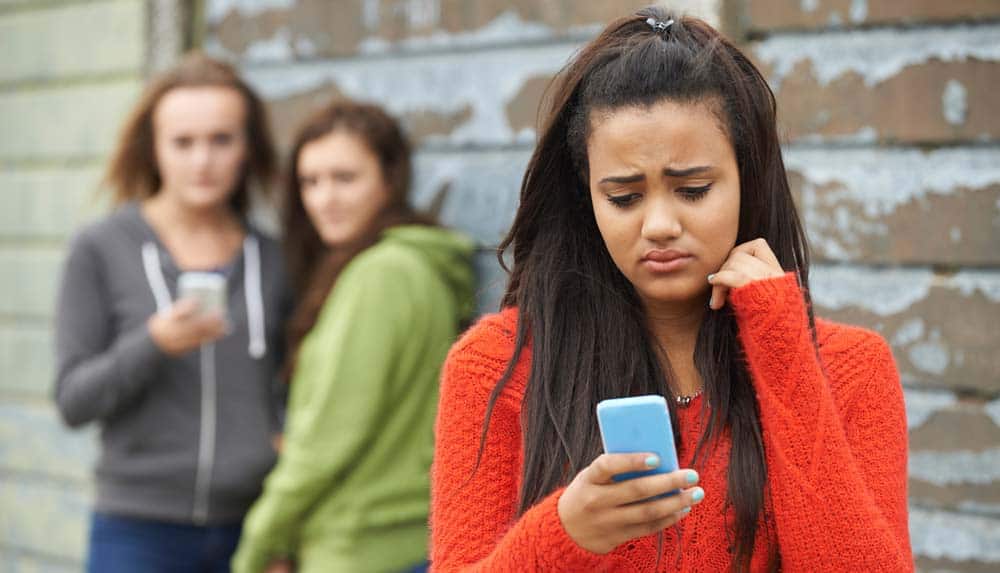
There are several positive aspects of social media, including the ability to communicate easily with others, find new friends, join worthwhile causes, express individuality, and locate new information and valuable resources. On the other hand, research has also found evidence that heavy social media use is associated with poor mental health.6
Negative experiences related to social media are often due to:
- A fear that you’re missing out (FOMO) or believing that others are having more fun/living a better life than you are
- Making constant comparisons and experiencing feelings of inadequacy about your life or appearance
- Being cyberbullied by being the subject of hurtful comments, rumors, or lies that leave a lasting impact on your life
- Becoming self-centered and so obsessed with your online appearance that your real-life relationships and connections suffer as a result
- Developing symptoms of mood disorders like anxiety or depression due to isolation, loneliness, and a severe lack of face-to-face interactions and connection
Social Media and Drug Use Statistics
- American teens ages 12 to 17 that spend time on social networking sites daily are 5 times likelier to use tobacco, 3 times likelier to use alcohol, and twice as likely to use marijuana.7
- 40 percent of all teens surveyed by the National Survey of American Attitudes on Substance Abuse XVI: Teens and Parents, the 16th annual back-to-school survey conducted by CASAColumbia at Columbia University, have seen pictures of kids abusing drugs or alcohol.7
- 50 percent of teens who have seen images of other teens abusing drugs or alcohol on social media first saw such pictures when they were 13 years old or younger, and 90 percent saw them when they were 15 years old or younger.7
- Compared to teens who have never seen pictures of other teens abusing drugs or alcohol on social networking sites, those who did are:
- 3 times likely to use alcohol,
- 4 times likelier to be able to get and use marijuana,
- 3 times likelier to be able to get prescription drugs without a prescription,
- and more than twice as likely to be able to get alcohol in a day or less.7
- Compared to teens who are not cyberbullied online, those who are or have been cyberbullied are more than twice as likely to use tobacco, alcohol, and marijuana.7
- Of 358 online participants in the study, “#Drugsforsale: An exploration of the use of social media and encrypted messaging apps to supply and access drugs,” 76 percent said they regularly used Snapchat to access drugs and 21 percent favored Instagram.8
- The convenience of organizing a drug deal was cited as the most commonly reported advantage of using social media apps, with 79 percent of study participants providing this as a reason for using apps.8
- A study performed by Michigan State University found that people who were shown Facebook ads promoting beer were more likely to indulge in an alcoholic beverage than those who were shown ads for bottled water.9
- Eighty-two percent of drug dealers on Instagram claim to sell marijuana, but codeine cocktails are also available from 58 percent of dealers and 20 percent are selling MDMA.10
Is Social Media Used As a Platform to Sell Drugs?
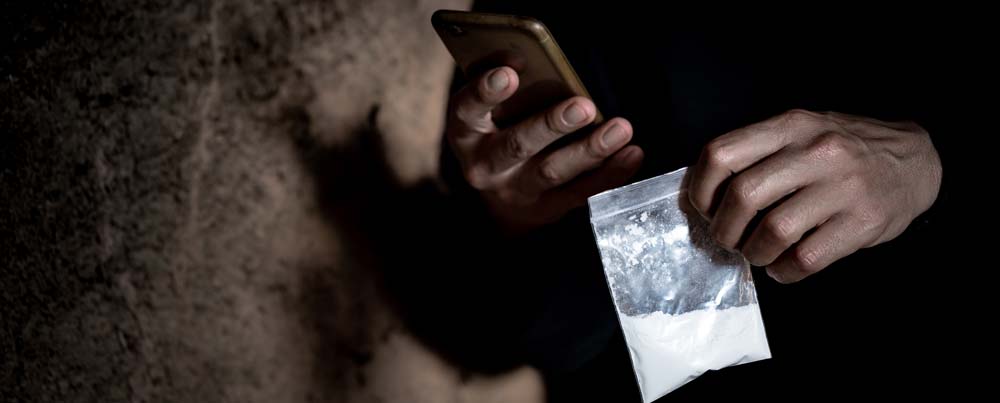
Many Americans share their personal lives on social media daily. Although most (if not all) social media channels maintain some type of anti-drug policy, some of these websites do not enforce them as strictly as others, leaving plenty of opportunity for drug-related activities and sales.
Illegal drugs are sold on several different social media platforms, including:7
- Facebook Marketplace
- Tinder
These social media platforms provide a quick and convenient way for buyers and sellers to connect with seemingly “secure” features and a way to preview the product without having advanced technical expertise (such as is required on the dark web). These apps and websites can be used to advertise the drugs, communicate with buyers privately, and arrange or complete transactions.
Drug dealers typically don’t sell substances on these social media sites with blatant posts proclaiming “Drugs for Sale!” Instead, they use imagery and hashtags to engage interested buyers before migrating the conversation to an anonymous messaging app like Kik or Whisper to close the deal.10
For example, drug dealers on Instagram may use hashtags like #kush4sale paired with images of scantily-clad women smoking marijuana to attract buyers. These potential buyers may then direct message the dealer on Instagram to get in contact with them. These conversations are often then carried to other platforms to actually purchase the drugs or arrange a meeting.
According to Vice, one young man told researchers: “It just seemed like a simple, modern way to buy things. I’d gotten pretty sick of the darknet because I never really got it, so had to always have a friend on hand to help me out. With apps it’s super simple; in no time I’ve managed to connect with strangers who I would’ve never been able to access before. Plenty of dealers in this area exist solely on Snapchat, so without it I would’ve kept relying on people approaching me in the street or randomly bumping into people in clubs.”11
In addition to the illegal sales being made on these platforms, users frequently tout their drug and alcohol abuse on their profiles with pictures and status updates, which may encourage some of their younger friends and/or peers to do the same to live up to some sort of social expectation.
Although social supply through friends or acquaintances is still typically the preferred method of buying and selling drugs, social media apps and websites are quickly gaining traction as a viable way to access drugs.
Drugs and Social Media: How People Use Social Media Apps to Buy and Sell Drugs |
|
|
|
Used as a commercial marketplace where potential buyers can locate a dealer and products by searching hashtags and browsing12 |
|
|
Provides an environment where drug and alcohol abuse is glamorized and normalized with targeted ads and images of celebrities, friends, and family using addictive substances. Dealers may also target users in recovery.13 |
|
TikTok
|
Provides videos that give users tips on how to use drugs, show the after-effects of drug use, and give the impression that drug use is harmless and fun14 |
|
Snapchat
|
Connects buyers and sellers. Provides additional feature of being able to receive self-deleting snaps.15 |
|
|
Used to communicate the details of a drug deal (often to establish a physical meeting place or discuss payment) after a buyer locates a seller online |
|
Kik
|
Used to communicate the details of a drug deal (often to establish a physical meeting place or discuss payment) after a buyer locates a seller online |
|
Wickr
|
Used to communicate the details of a drug deal (often to establish a physical meeting place or discuss payment) after a buyer locates a seller online |
|
Tinder
|
Uses a cell phone’s location service to connect buyers and sellers. Requires users to swipe through profiles, looking for particular emojis that indicate a potential dealer (for example, a maple leaf emoji to signify cannabis) |
|
Grindr
|
Uses a cell phone’s location service to connect buyers and sellers based on their proximity to one another |
| Generally speaking, social media websites and apps serve as a convenient platform that connects buyers and sellers. The actual deals usually take place using other encrypted communication services. While many buyers and sellers believe social media apps provide security features that will cover their tracks and prevent law enforcement from detecting illegal activity, there are significant security flaws in every app that is used to buy and sell drugs.16 | |
How Do Illegal Internet Pharmacies Use Social Media to Sell Drugs?
Instead of buying drugs from friends or putting oneself in a potentially dangerous situation, people can now buy drugs with a single click of a button online.
Many online pharmacies exist online and although some are legitimate, a review by the National Association of Boards of Pharmacy (NABP) found that 97% of these websites violate pharmacy laws and practice standards.17
Many illegal online pharmacies use social media websites to advertise their products or pose as legitimate companies with pages. However, you should be extremely wary of doing business with these online pharmacies, on or off social media platforms.
There is no way to prove the legitimacy of the substances you are purchasing. Any sense of security that you may feel due to social media security settings does not necessarily mean the illegal activities won’t be detected by law enforcement agencies.
What Are the Risks of Buying Drugs Online via Social Media Platforms?
Drug dealers often manipulate the same privacy settings that are used to protect users’ personal information as a means of exploiting social media websites and apps to cover their tracks. Even though it may seem safe and private to buy drugs on social media websites, you can still be caught by law enforcement. There are also many additional privacy concerns and personal risks involved.
- The seller could steal your money: Online drug dealers are not reputable business people and they are not backed by any legal system or authority. Therefore, they could easily steal your money and neglect to fulfill your order.
- The drugs could be counterfeit: Counterfeit drugs are frequently sold online to unsuspecting buyers. These substances often contain dangerous ingredients, incorrect active ingredients, or no active ingredients at all. They may also contain harmful substances like fentanyl, which is potentially life-threatening and can increase your risk for overdose.
- You could be fined or charged with a felony: Purchasing illegal drugs or prescription drugs online without a legitimate prescription is illegal. If you are caught, you could face a hefty fine or even be charged with a felony if the drugs are illegally shipped into the U.S. from a different country.
How Can Social Media Impact Addiction Recovery?
For people in recovery, social media can be a great thing! It provides another way to connect with a sober peer community, serves as an outlet to share personal stories about addiction and recovery, and provides opportunities to raise awareness about the dangers of alcohol abuse, illegal drug use, and prescription drug abuse.
While these are all great benefits, social media can also have a dark side for those who are recovering from addiction. For example, someone in recovery may be more prone to experiencing mental health problems or exacerbating existing ones. Consistent or heavy social media use could increase the likelihood that they would experience negative effects on their mental health.
Heavy social media use may also disrupt a lifestyle of recovery by:
- Becoming another addictive habit
- Constantly comparing yourself to others and feeling like your life will never measure up
- Becoming isolated
- Developing or exacerbating an existing sleep disorder
How to Increase Awareness of Drug and Alcohol Abuse Through the Use of Social Media
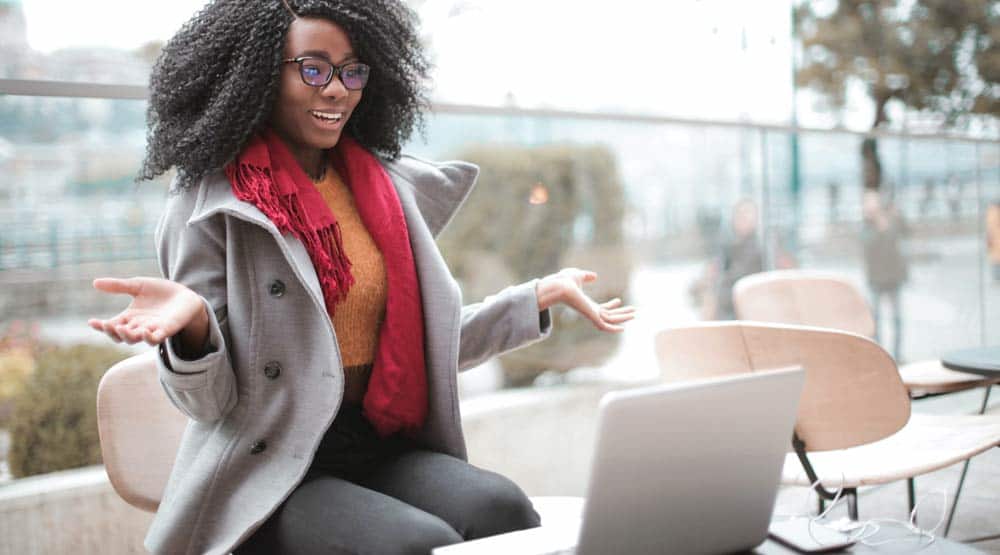
When used responsibly, social media can be an excellent tool to increase awareness of drug and alcohol abuse with audiences that may not otherwise be exposed to that content.
For example, individuals may choose to use social media apps and websites positively by:
- Sharing personal recovery stories
- Promoting educational resources about addiction, treatment, and recovery support
- Intentionally curating personal content to be more “real” and genuine as to appeal to others who are currently or have also struggled with substance abuse
- Educating friends and followers about the dangers of alcohol and drug abuse as well as current drug abuse trends that could negatively impact them
Combating Drug Abuse with Long-Term Rehab
Drug and alcohol abuse continues to be a prevalent problem among teens, young adults, and older adults, and there’s no doubt that social media plays a part in this. In a time when drugs and alcohol are easily accessible via social media and the internet, it’s extremely important to address the drug abuse and addiction of loved ones immediately, before it gets out of hand.
If you believe that a loved one is addicted to drugs or alcohol, an inpatient or outpatient drug rehab program may be the best way to address the physical, psychological and behavioral aspects of their addiction. Long-term drug rehab lasting 90 days or longer has been shown to provide better outcomes for individuals who are suffering from addiction.
Recovery from substance abuse is a lifelong process that may require multiple episodes of treatment, such as drug detox, inpatient drug and alcohol rehab, sober living, and aftercare. If your loved one is addicted, he or she mustn’t leave treatment prematurely, as this could hinder his or her long-term recovery and lead to relapse.
There are plenty of things that may keep a person from enrolling in a rehab program, such as fear of failure, denial, or a concern for what others may think, but a carefully planned intervention may be just what your loved one needs to start their recovery journey. Plus, a high-quality rehab center like Nova Recovery Center will provide you or your addicted loved one with a personalized continuum of care plan to keep you fully engaged in each step of your recovery so you have the best chance at achieving a genuine and lasting personal transformation that leads to a full life of sobriety.
If you or a loved one regularly purchases drugs on social media or has been sucked into a lifestyle of consistent drug and alcohol abuse to maintain a social standing, you should know that there is a way out.
Call Nova Recovery Center today to speak with an admissions specialist about our gender-specific drug and alcohol rehab programs for men and women. We are here to help whenever you’re ready.
References:
-
- https://techcrunch.com/2017/06/27/facebook-2-billion-users/
- https://wallaroomedia.com/blog/social-media/tiktok-statistics/
- http://www.pewresearch.org/fact-tank/2017/01/12/evolution-of-technology/
- https://www.ypulse.com/post/view/5-stats-on-millennials-teens-social-media1
- https://www.ncbi.nlm.nih.gov/pmc/articles/PMC4432862/pdf/arcr-36-1-91.pdf
- https://www.ncbi.nlm.nih.gov/pmc/articles/PMC4183915/
- https://www.centeronaddiction.org/newsroom/press-releases/2011-national-teen-survey-finds
- https://www.sciencedirect.com/science/article/abs/pii/S0955395918302111
- https://msutoday.msu.edu/news/2016/party-online-the-link-between-social-media-alcohol-use/
- http://observer.com/2014/05/heres-every-statistic-you-could-want-on-instagram-drug-dealers/
- https://www.mirror.co.uk/news/uk-news/snapchat-instagram-cocaine-mdma-how-10812890
- https://www.vice.com/en_uk/article/gy7nxx/how-good-are-social-media-apps-for-buying-drugs
- https://www.bostonmagazine.com/health/2019/10/15/instagram-drug-market/
- https://www.vice.com/en_us/article/kzyejw/drug-dealers-facebook-target-people-addiction
- https://www.the-sun.com/news/470759/how-tiktok-has-become-a-hotbed-for-drug-users-who-teach-kids-how-to-take-class-as/
- https://www.sciencedirect.com/science/article/abs/pii/S0955395918302111?dgcid=author
- https://www.citizen.org/article/buying-drugs-online-presents-hidden-risks/
